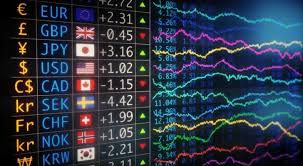
An Introduction to Forex Trading for Beginners
Forex trading, or foreign exchange trading, is a global decentralized market where currencies are traded. It’s one of the largest financial markets in the world, with trillions of dollars exchanged daily. For beginners, diving into this world can seem overwhelming. However, with the right foundational knowledge and resources, anyone can embark on their Forex trading journey. This guide will take you through the essentials of Forex trading, providing tips and strategies to help you get started. To explore more resources, you can visit forex trading beginners https://trading-bd.com/.
Understanding Forex Market Basics
The Forex market operates 24 hours a day, five days a week, providing plenty of opportunities for traders across different time zones. Currencies are traded in pairs, such as EUR/USD (Euro/US Dollar) or GBP/JPY (British Pound/Japanese Yen). The value of a currency pair indicates how much of the second currency you need to spend to buy one unit of the first currency.
Major Currency Pairs
Forex trading primarily involves the major currency pairs, which include:
- EUR/USD – Euro/US Dollar
- USD/JPY – US Dollar/Japanese Yen
- GBP/USD – British Pound/US Dollar
- USD/CHF – US Dollar/Swiss Franc
Understanding these major pairs is crucial for beginners as they are the most liquid and have tighter spreads, which means lower costs for traders.
Getting Started with Forex Trading
Starting your journey in Forex trading involves several key steps:
1. Educate Yourself
Before you begin trading, it’s vital to educate yourself about the Forex market. There are many online resources, courses, and books available that can provide you with foundational knowledge of trading concepts, technical analysis, and market indicators.
2. Choose a Reputable Broker
Choosing the right broker is crucial for your success. Look for a broker that is regulated, has a good reputation, and offers a trading platform that fits your needs. It’s essential to understand their fee structure, spreads, and available trading tools.
3. Open a Trading Account
Once you have chosen a broker, you will need to open a trading account. Many brokers offer demo accounts where you can practice trading with virtual money before risking real funds. This is an excellent way to get familiar with the trading platform and develop your skills.
4. Develop a Trading Plan
A well-defined trading plan is essential for successful trading. Your plan should include your trading goals, risk management strategies, and the criteria you will use for entering and exiting trades.
5. Practice Risk Management

Managing risk is one of the most critical aspects of Forex trading. It’s advisable to never risk more than a small percentage of your trading capital on a single trade. Use stop-loss orders to limit potential losses and protect your account from significant downturns.
Understanding Forex Analysis
Successful Forex trading relies heavily on analysis. Traders typically employ two main types of analysis: fundamental analysis and technical analysis.
1. Fundamental Analysis
Fundamental analysis involves evaluating economic indicators, news events, and geopolitical developments that can influence currency values. Key economic indicators include GDP growth rates, employment figures, and interest rates. Understanding these indicators can help you make informed trading decisions.
2. Technical Analysis
Technical analysis, on the other hand, focuses on analyzing price charts and patterns to predict future price movements. This can involve the use of various tools, including technical indicators, trend lines, and chart patterns. Learning to read charts and understand technical signals is crucial for trader success.
Common Trading Strategies for Beginners
As a beginner trader, it can be helpful to familiarize yourself with different trading strategies. Here are a few popular ones:
1. Day Trading
Day trading involves opening and closing trades within the same day to capitalize on short-term price movements. Day traders typically focus on technical analysis and utilize tight stop-loss orders.
2. Swing Trading
Swing trading aims to capture price moves over several days to weeks. Swing traders often use a mix of fundamental and technical analysis to make informed decisions.
3. Position Trading
Position trading is a long-term trading strategy where traders hold positions for weeks, months, or even years. This approach requires a good understanding of fundamental analysis and market trends.
Continuous Learning and Adaptation
The Forex market is constantly evolving, which means that continuous learning is essential for success. Stay updated with the latest market trends, economic news, and advancements in trading technologies. Joining Forex trading communities, attending webinars, and reading industry blogs can also enhance your understanding and trading performance.
Conclusion
Forex trading can be a rewarding venture for beginners willing to put in the time and effort to learn the ropes. By educating yourself, developing a responsible trading plan, and practicing risk management, you can increase your chances of success in the Forex market. Remember, patience and discipline are essential traits for any successful trader. As you gain experience, you will develop your trading style and strategies that work best for you. Happy trading!